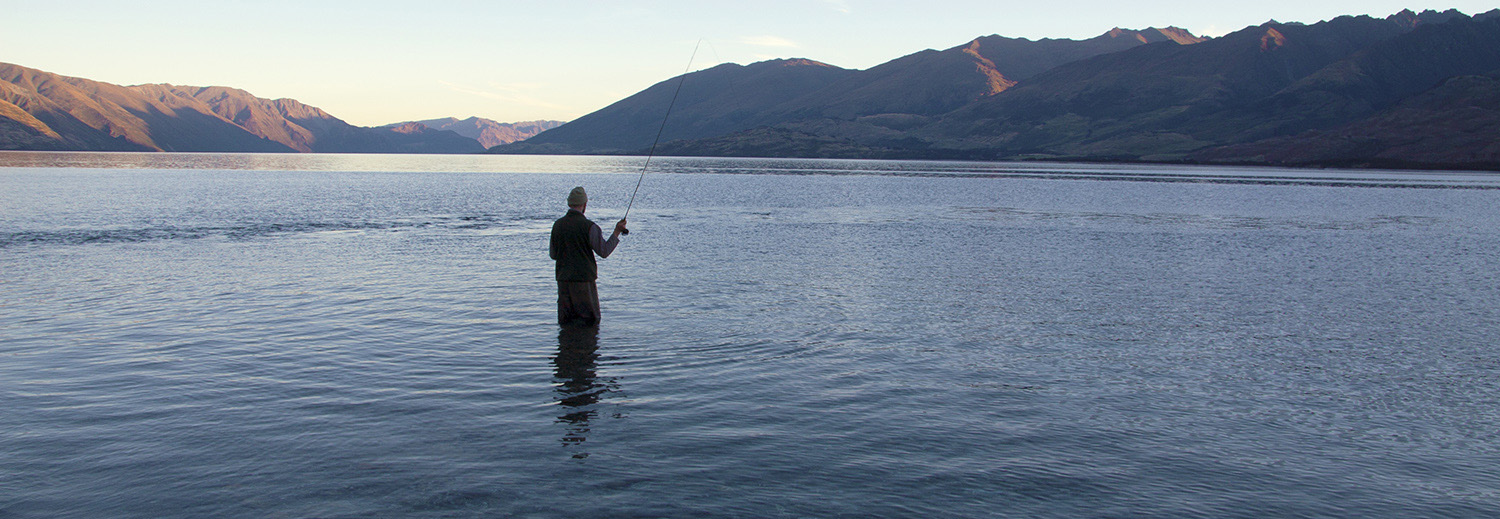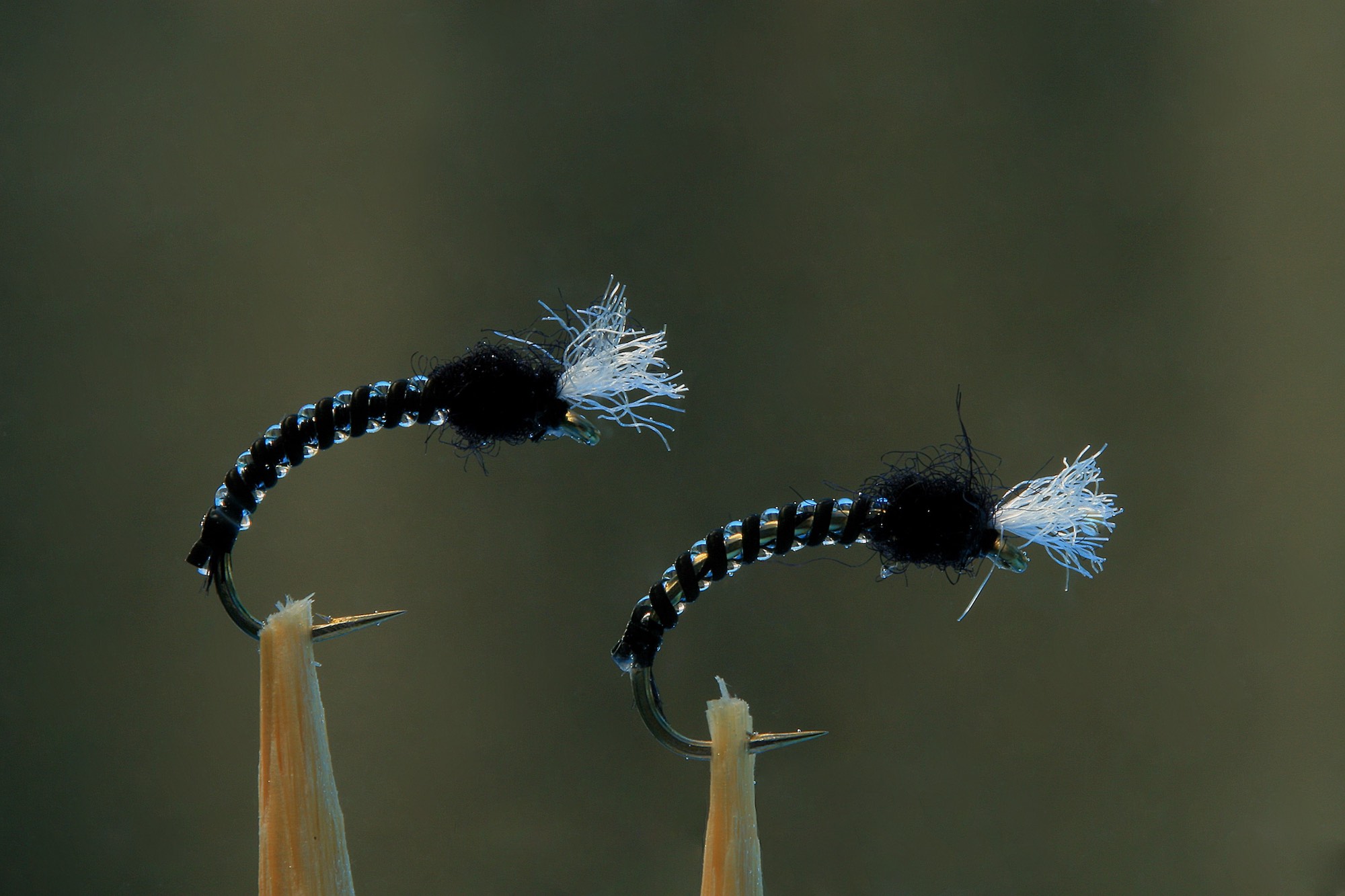
A Jelly Midge under water: Standard (left) and Sparkle (right) versions
Originator : Marc Griffiths
Hook : Kamasan B100 or other light wire grub hook, size 14 to 18
Thread: Black UTC 70
Abdomen : One strand black and one strand clear 0.5mm Stretch Cord
Breathers : White carded Antron yarn
Thorax : Black Antron dubbing
Midge pupae are important food for trout in many lakes and the slower portions and backwaters of lowland rivers. The pupae are usually eaten when they rise through the water column to hatch on the surface. Rising pupae become increasingly translucent as gases expand within the intercuticular space. Trout feeding on rising pupae have a reputation for being difficult and discerning, preferring patterns with sparkle and translucency above patterns that are opaque and sombre.
Stretch Cord is the ideal material for imitating rising midge pupae. Although Zebra Jelly Midges created by wrapping Stretch Cord around a black thread base might appear dull in air, they come alive in water with all the natural translucency and sparkle one could hope for, owing to the special optical properties of the material.
To imitate the chrome silver segmentation of certain North American and Australian midge pupae the Stretch Cord is wrapped around a bare hook shank, thereby producing the sparkle version of the Jelly Midge. To better appreciate the optical properties of stretch cord, compare the “under water” photographs of the Zebra Jelly Midge (above) with those in the tying sequence (below).
Stretch Cord with a diameter of 0.5-0.6mm can be used to tie realistic Jelly Midges in sizes 14 to 18. To maintain natural proportions it's necessary to stretch the material a lot more when wrapping the abdomens of smaller midge pupa. Use stretch cord with a diameter of 0.7-0.8mm for sizes 12 and larger.
Tying Steps
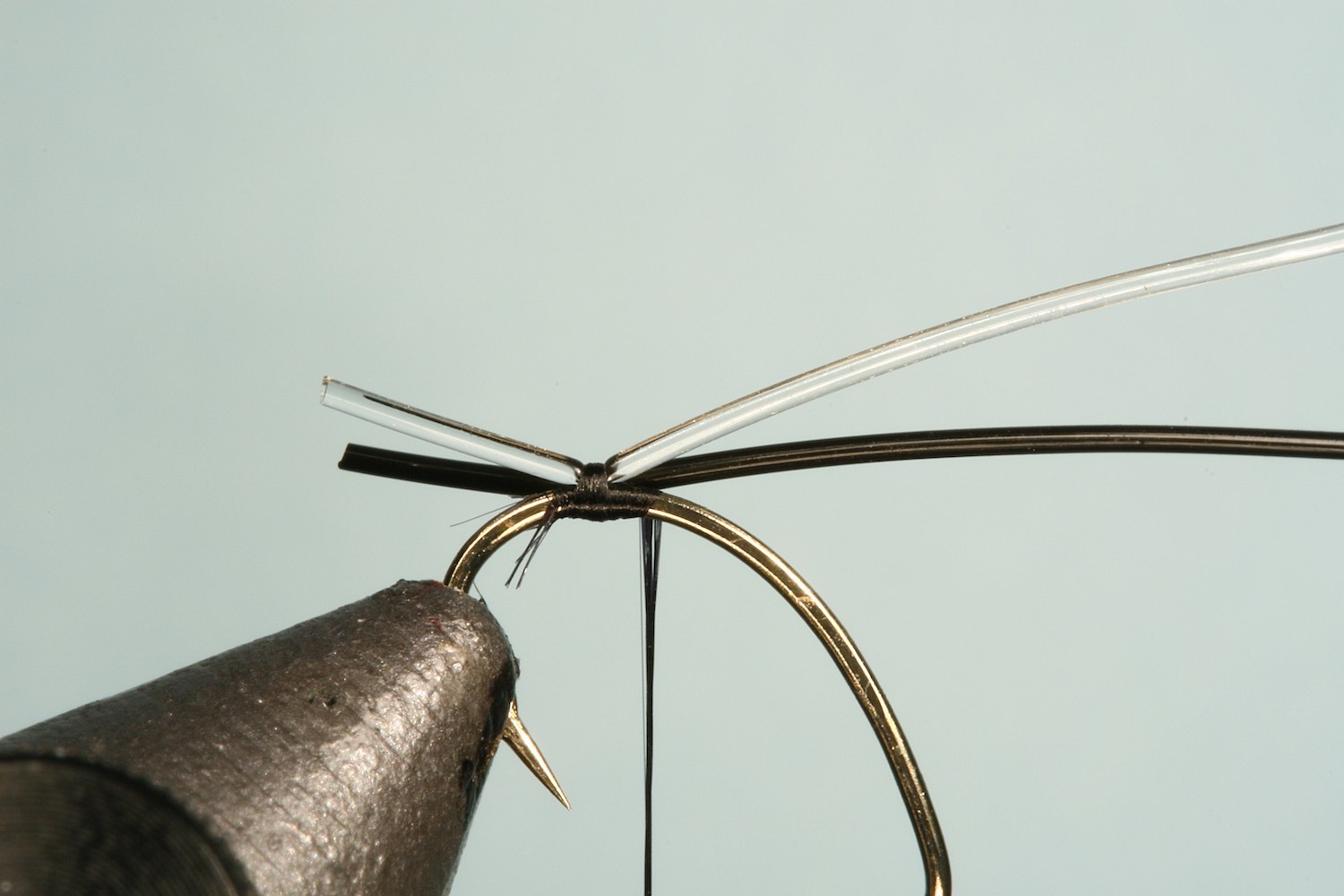
Step 1:
Attach the thread to the bend of the hook, using as much torque as possible without breaking the thread. To create the Zebra Jelly Midge, tie in two strands of Stretch Cord, one black and the other clear, with three tight turns of thread, atop one another.
Make two more turns immediately in front of the tie-in, followed by an additional two wraps over the original turns - this locks and prevents strands spinning round shank when wrapping. Make two more turns in front of the tie-in then spin the thread clockwise to flatten it.
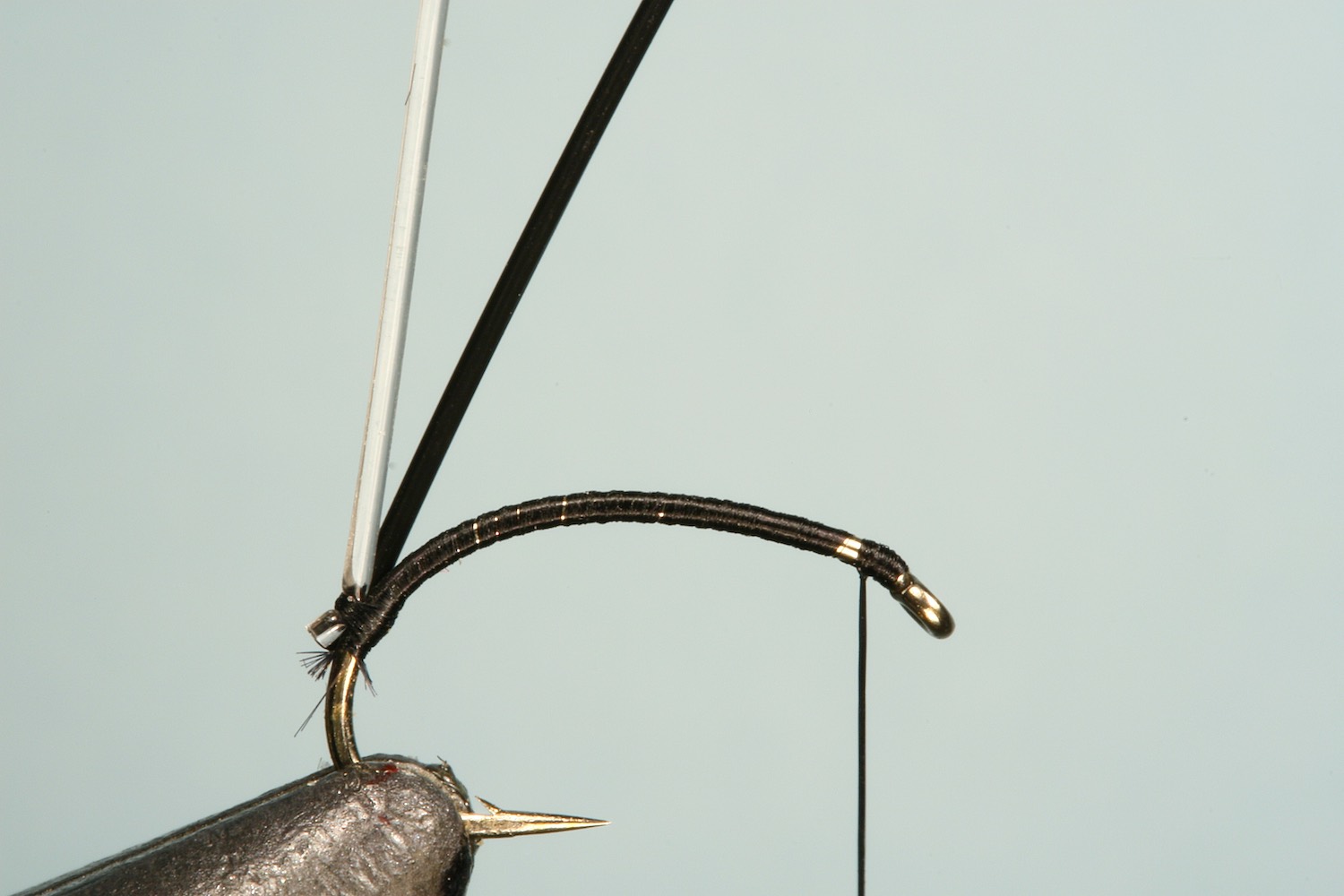
Step 2:
Now take the thread in closed turns to the hook eye, ensuring that the shank is covered by a thin thread layer, without building any bulk. Stretch the tag ends of the cord then trim them away close to the hook. If the pupae you're imitating have anal gills or tail tufts, trim the tag ends a little longer. The clear tag will literally light up under water.
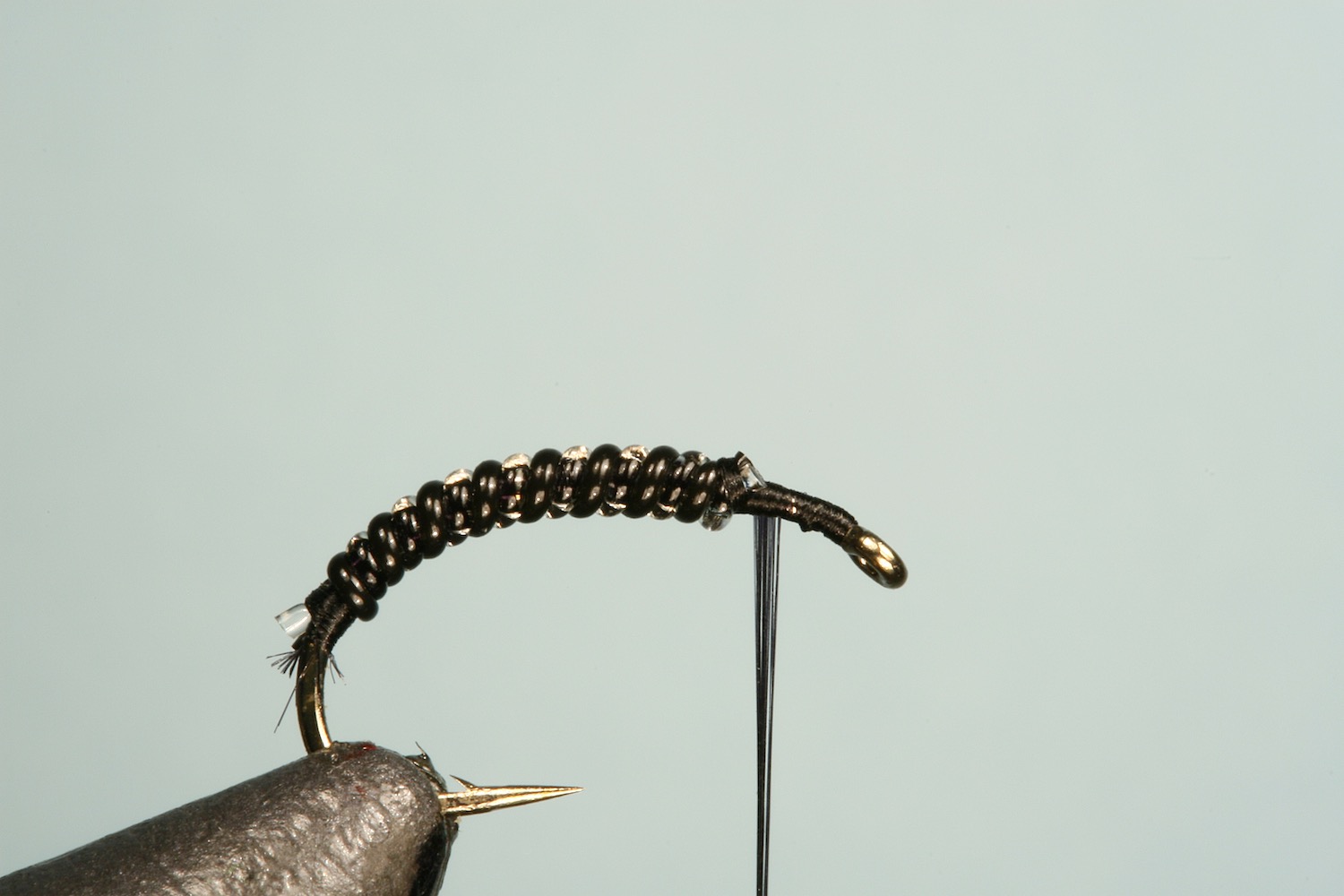
Step 3:
Next, stretch the strands of cord and wrap them together, forward and around the shank. Reduce the tension about a third of the way along the shank, to create a slight taper - practice this a few times until you get the hang of it. Tie off the Stretch Cord, allowing sufficient space for the thorax - distance to eye will vary according hook size.
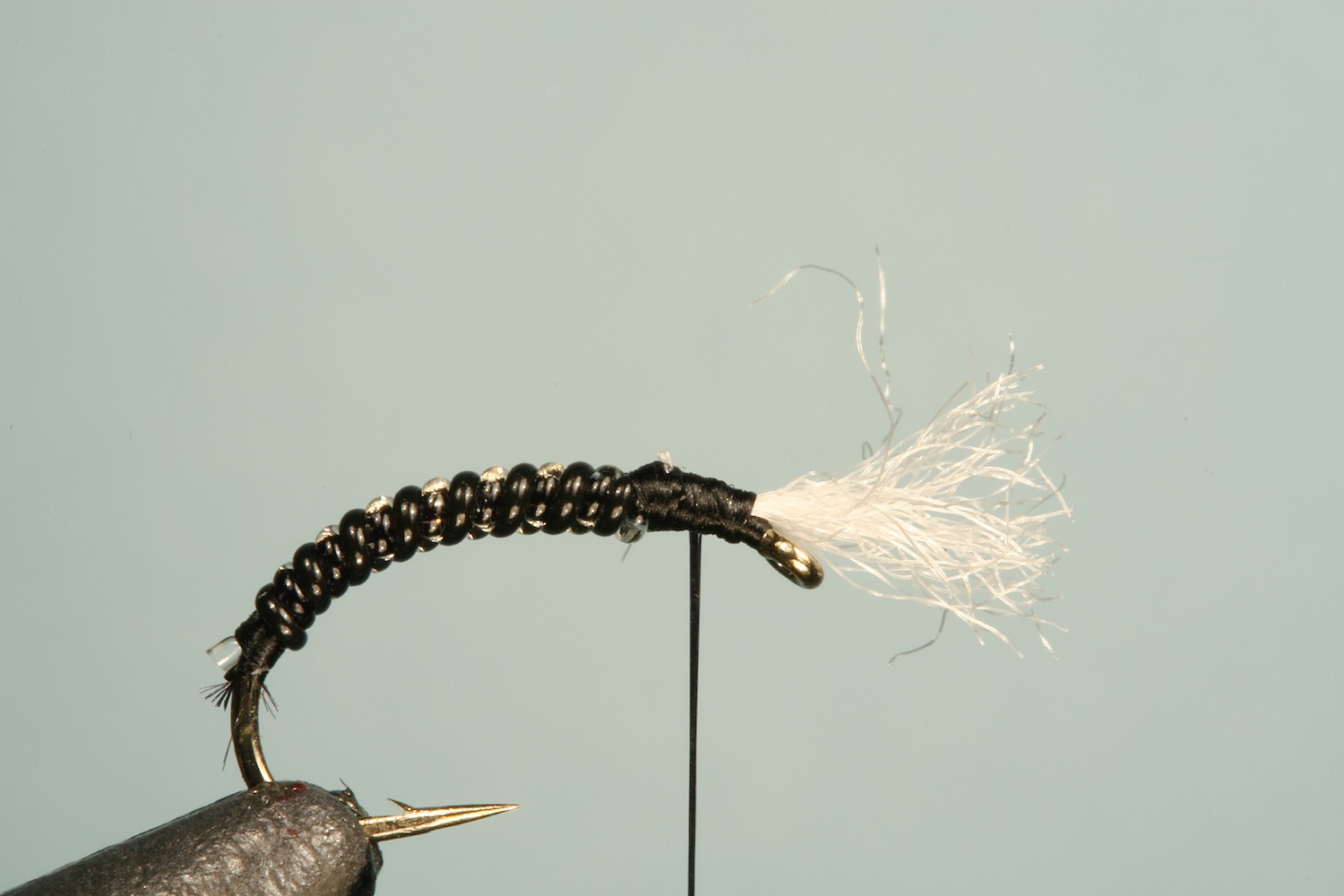
Step 4:
Tie a 2cm length of white Antron yarn on top of the hook in the space between the stretch cord and the eye, then remove the rearward excess.
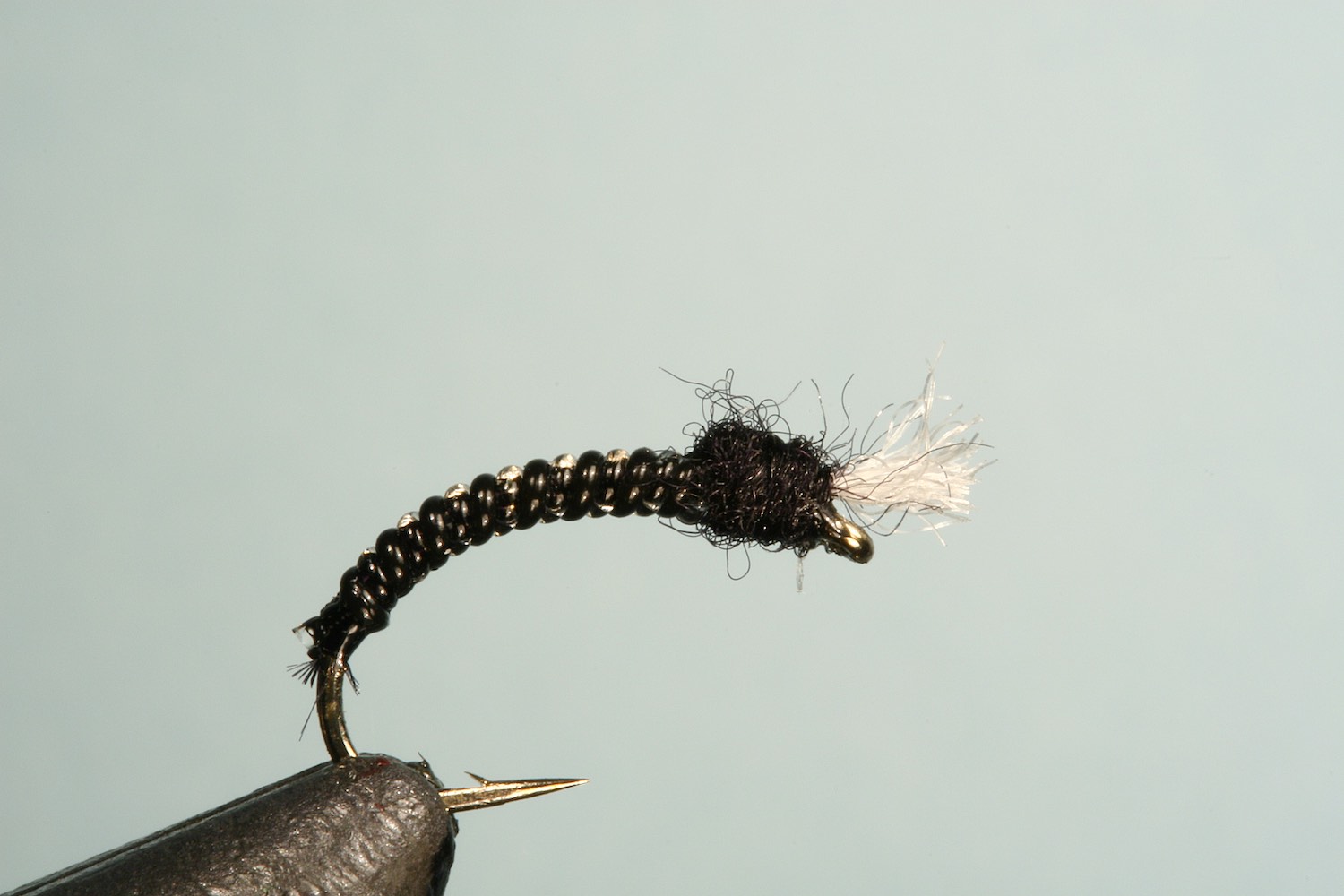
Step 5:
Twist a fine noodle of black Antron dubbing onto the thread, and build a thorax. Tie the thread off under the gills, then varnish both the tie-in on the hook bend and the tie-off at the eye. Finally trim the gills to the required length.
Jelly Midge Variations
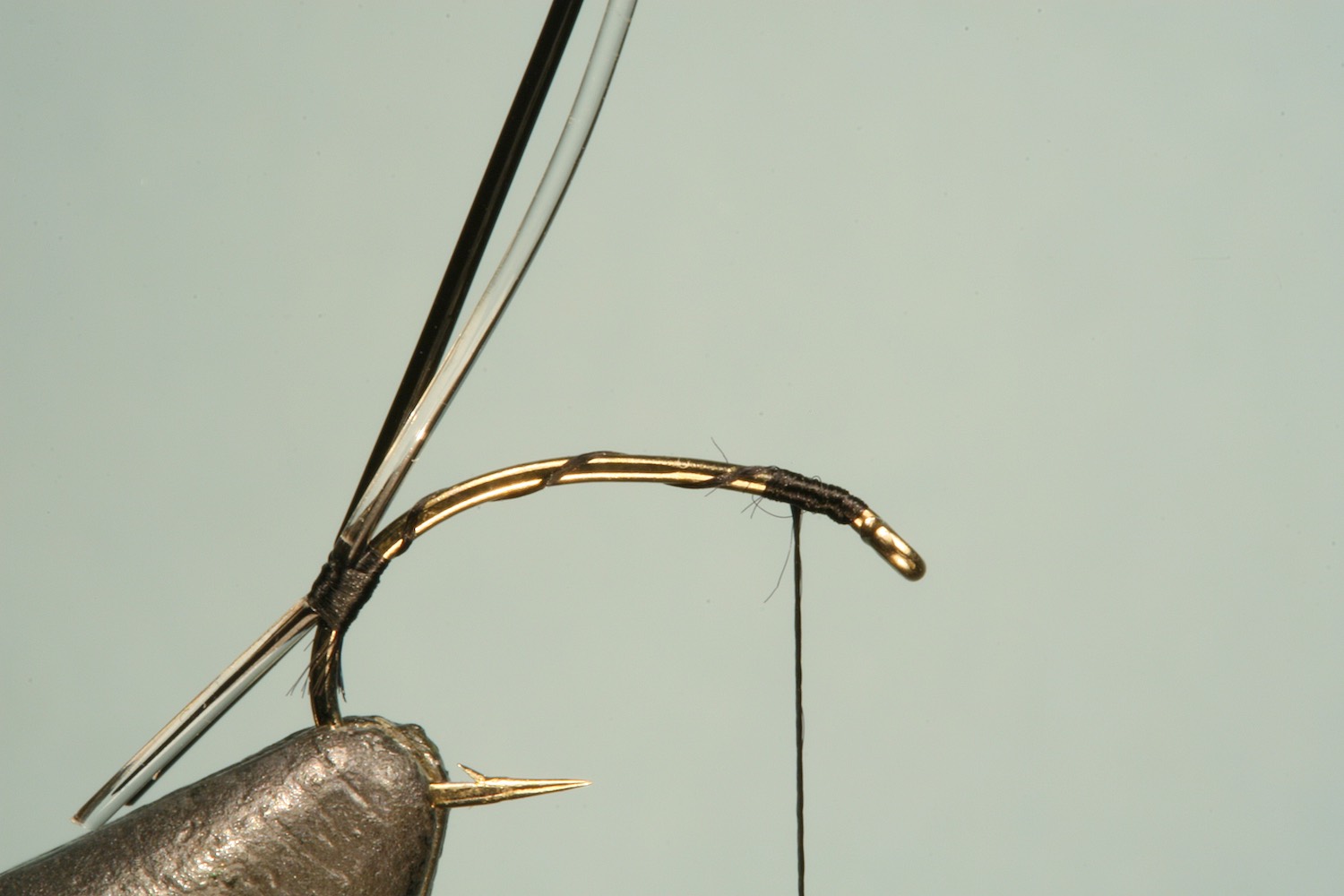
The sparkle version of the Zebra Jelly Midge is created by wrapping the Stretch Cord around a bare shiny hook shank. After tying the Stretch Cord in at the hook bend, advance the thread to the hook eye in large open turns, then wrap it backwards to the position on the shank where the thorax will begin.
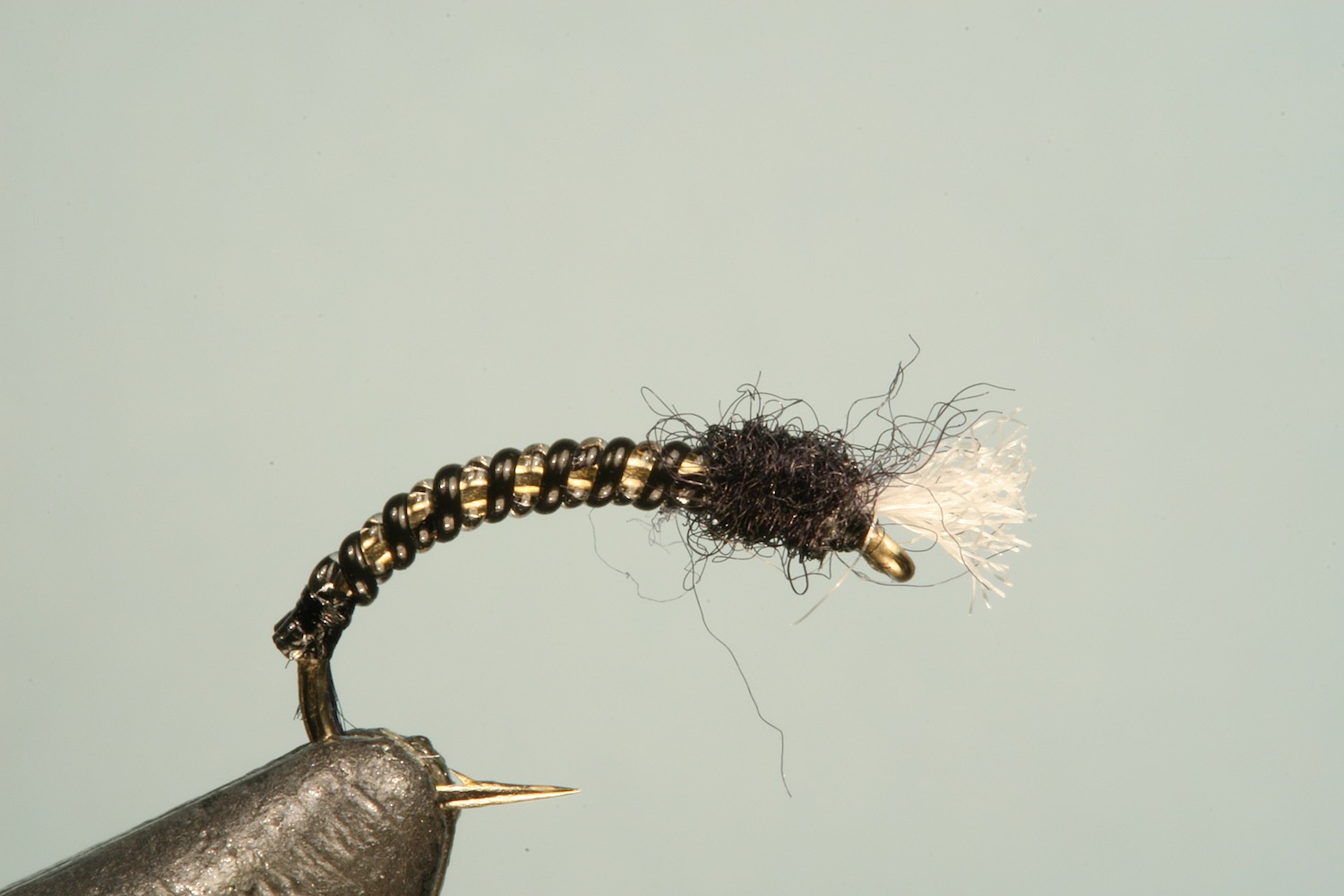
Repeat Steps 3 to 5 to complete the Sparkle Zebra Jelly Midge.
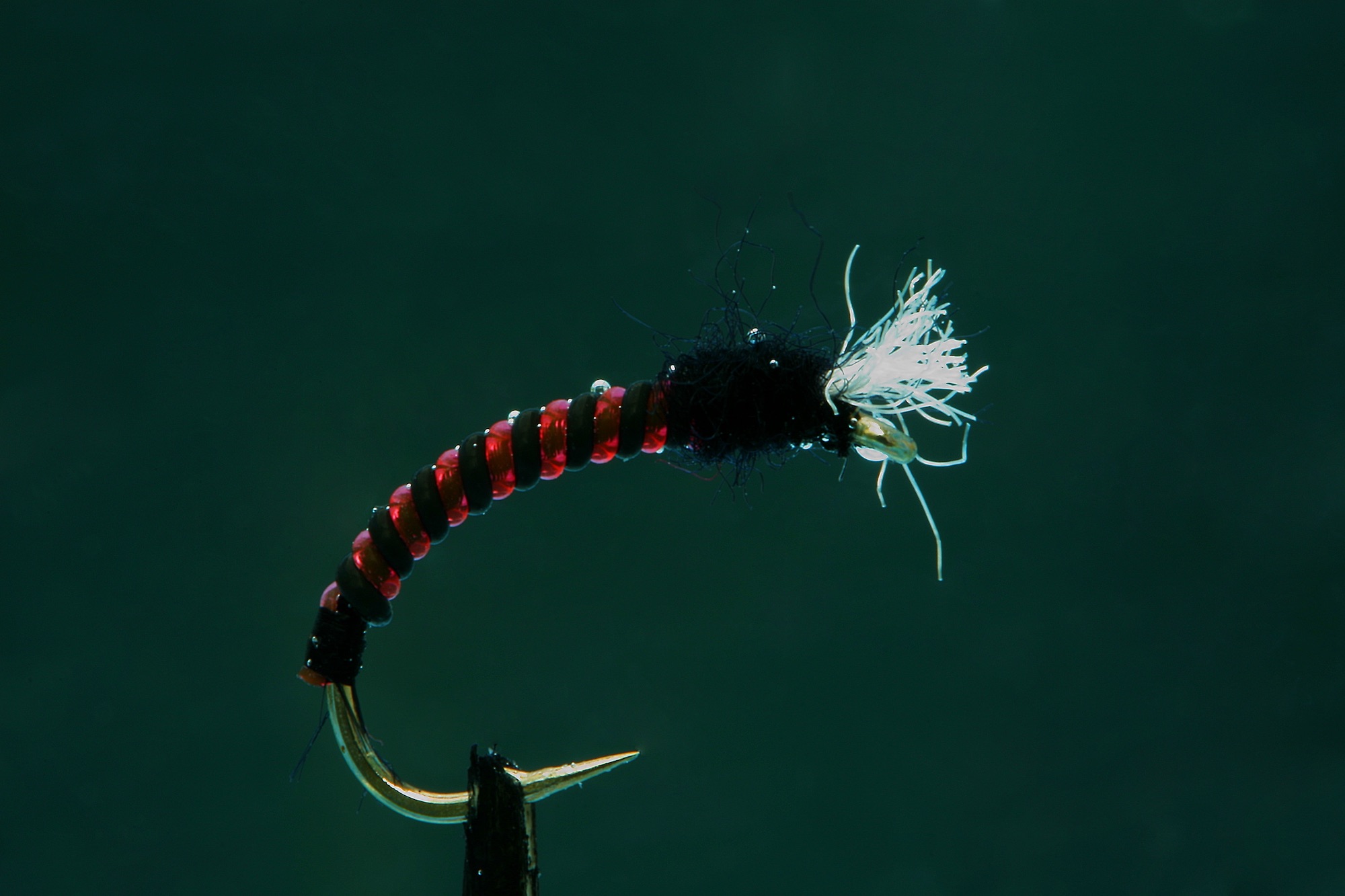
The Black & Red Jelly midge is created by wrapping black and red Stretch Cord over black thread. This produces a realistic red glow under water but does not overplay the red segments, which in nature are narrower than the black ones.
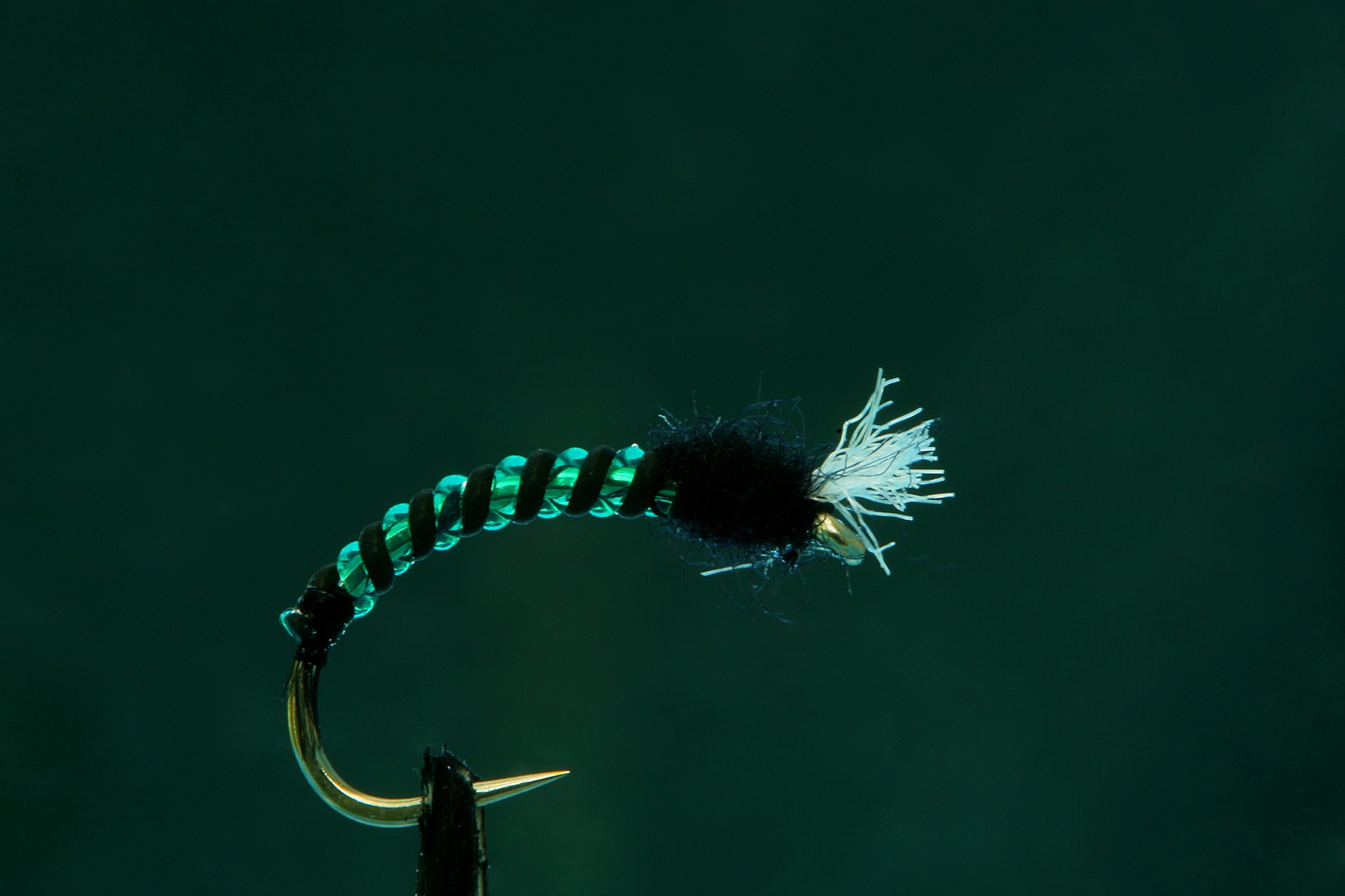
The Green Jelly Midge is created by wrapping green and black ribs around a bare shank. Naturally translucent, with some subtle sparkle, this pattern is more realistic than those with bodies of green Krystal Flash or flashy braid.
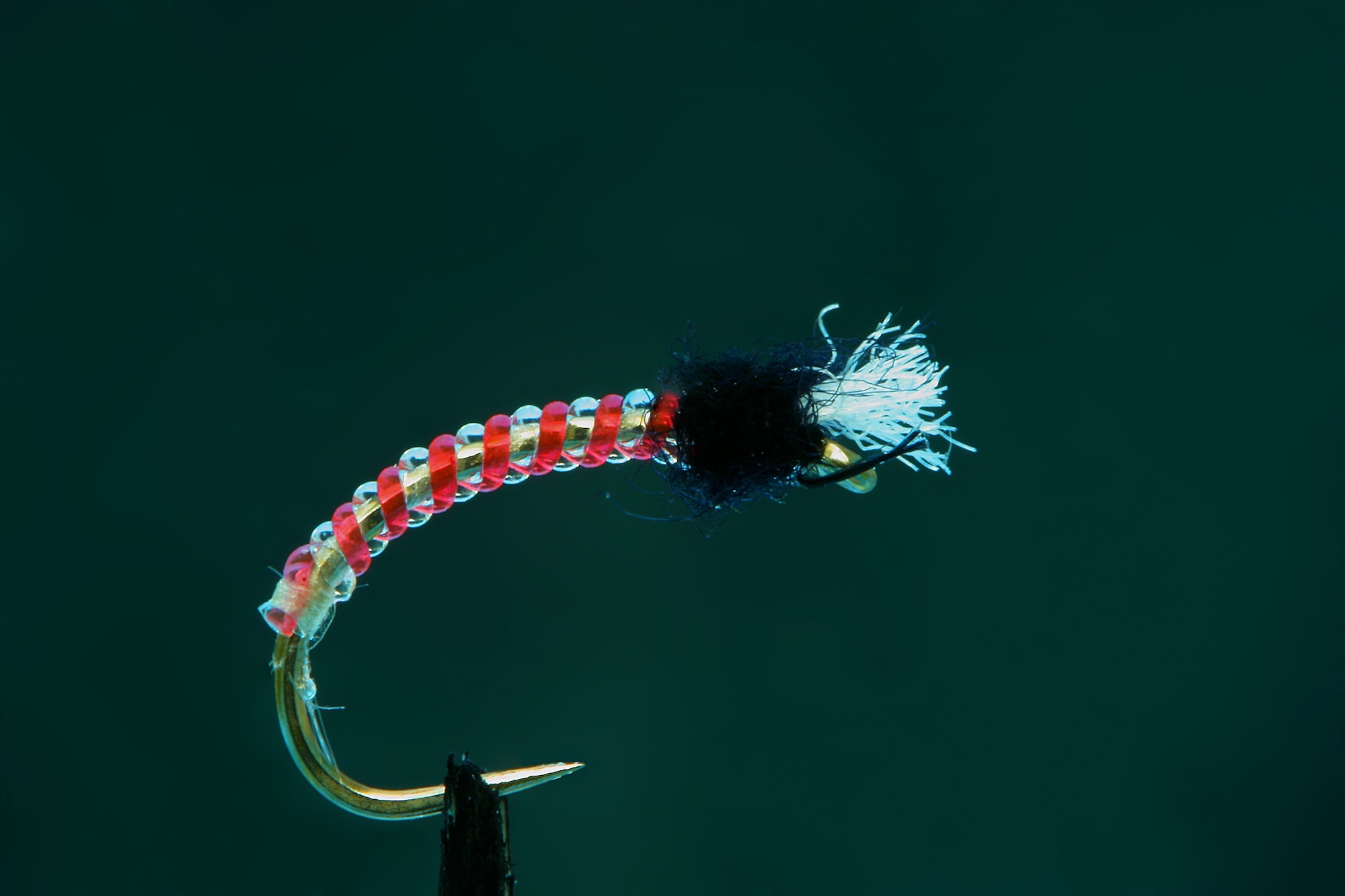
The Red Jelly Midge, designed to imitate the red and silver midges found in some North American lakes, is tied by wrapping clear and red Stretch Cord ribs around a bare hook shank. I use Grey Brown UTC 70 thread for this pattern.
+ Effective Spey flies for New Zealand Trout and techniques for fishing them
+ Evolution of the Swing Minnow - A deadly Trout Spey Streamer
+ Introduction to wonders of Stretch Cord
+ Jelly Bloodworm and Jelly Grub
+ Jelly Caddis
+ Jelly Leg Colly
+ Jelly Bellow Minnow
+ Jelly Crimp Nymph
+ Hot Foam Hopper
+ Hare's Mask Darter
+ Silicone Wing Cicada - Designing the Fly
+ Silicone Wing Cicada - Tying Steps
+ Gurgle Pop Minnow
+ Cutting your own Foam Cylinder
